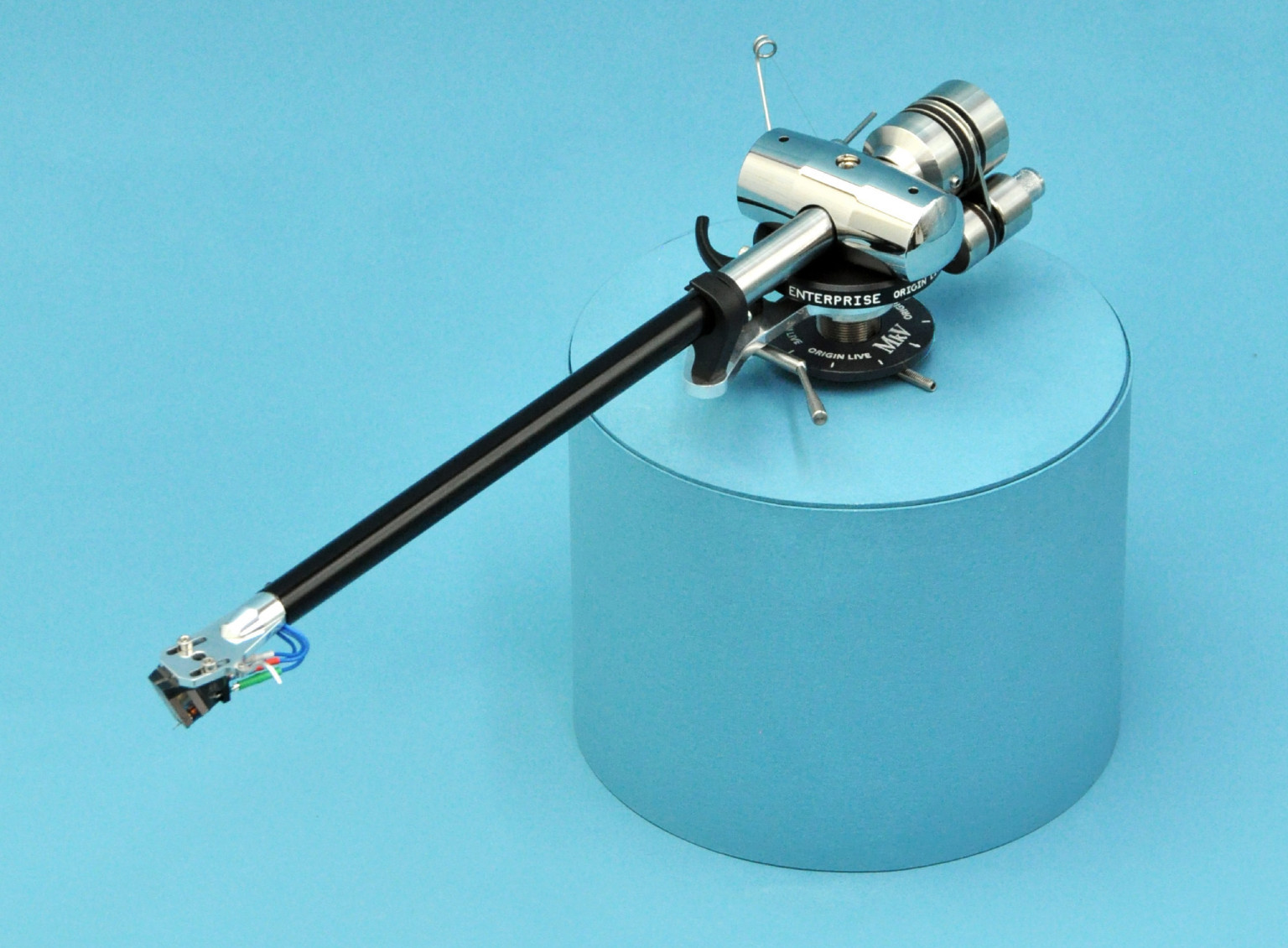Pt.2 – Living with and listening…
By Roy Gregory

Having already discussed the construction, thinking behind and features of Origin Live’s Enterprise tonearm <https://gy8.eu/review/origin-live-enterprise-mk-5-tonearm/>, it’s time to report on its performance. But before we get to the sound itself, there are a couple of practical considerations, features discussed in the first article that it’s only possible to assess once serious listening commences…
When it comes to dialling in a cartridge there are several factors – VTF, azimuth, bias and VTA – that have a profound impact on the performance achieved. In turn, the ease with which an arm allows such adjustments in practice – as opposed to in theory – dictates just how much of a pick-up’s potential performance is actually realised.
The Enterprise attacks these problems individually and thoughtfully. The main counterweight is locked in place with a small allen grub screw. Before setting it, you need to establish which of the outrigger weights you will use: I ran the heavier option on the Fuuga, the lighter on the Lyra Etna Lambda. Once the two parts have been selected, largely dictated by the weight of the cartridge and wanting to keep the entire counterweight assembly as close to the pivot as possible, position them in the centre of their adjustment range (or slightly closer to the pivot). Slide the whole assembly to a position where it provides a tracking force roughly in the centre of the recommended range and fix it in place. That’s a lot easier to describe than do, with tiny shifts of the weight impacting VTF significantly, but you only need to do it once. After that, fine tuning the VTF is really small increments – increments so small you wonder whether you actually adjusted it – is simplicity itself. The two outrigger weights lock against each other to fix their position, while a little experimentation with the coupling between them will allow you to set resistance to rotation while you are actually making adjustments. Turn the trailing weight and you’ll maintain the resistance, rather than loosening it. Once you are happy, lock the two weights together and you can be sure they’ll stay in place.
Bias is adjusted using a simple thread and falling weight. Various other, more sophisticated or complex systems have evolved over the years, but I’ve yet to discern any great superiority amongst them. Instead, I’m more interested in how easily and precisely they can be adjusted. The Enterprise’s bias is adjusted by sliding a retaining ball along an angled shaft. The shaft is devoid of graduations, but I never trust such things anyway. Bias should always be set by ear. The sliding ball on the Enterprise is held in place by a tiny grub screw. Adjust that carefully and just like the outrigger weights, you can set its resistance to movement. That, and the smooth surface of the shaft makes making really small bias adjustments incredibly easy and precise. Exactly what’s required.
I described the azimuth adjustment in some detail in the physical description of the arm, so I’m not going to labour the point here. What I will say is that the broad shoulders of the bearing yoke and the wide bearing stance that results, makes really precise adjustment of azimuth incredibly easy – with obvious and significant musical results. In performance terms, this is by far the best azimuth adjustment system I’ve ever used. The fact that it is so simple and repeatable is a huge added bonus.

